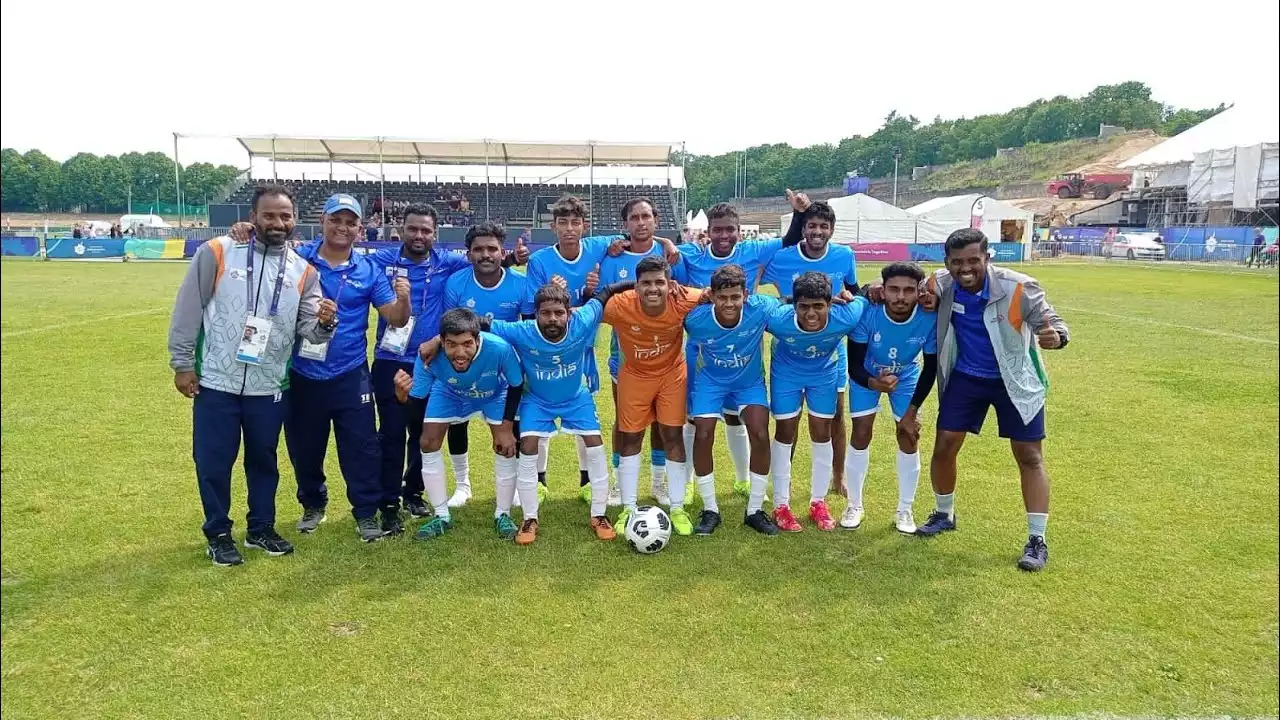Overview of Football Development in South Asian Countries
South Asian countries have a long history of being passionate about football. However, it is only in recent years that serious efforts have been made to develop the sport at a national level. These countries have recognized the potential talent they possess and are now investing in infrastructure, coaching, and youth development programs to nurture their players' skills.
India, with its massive population and football-crazy fanbase, has been at the forefront of this football revolution. The Indian Super League (ISL) was established in 2013, providing a platform for both local and international players to showcase their skills. The league has attracted significant investment and has helped raise the profile of Indian football on the global stage.
Similarly, Bangladesh and Nepal have also taken steps to develop their football infrastructure. Bangladesh Football Federation has been working towards improving the national team's performance by investing in youth development programs and organizing national leagues. Nepal, on the other hand, has seen the establishment of the National Football Academy, which aims to identify and train young talent from across the country.
Challenges Faced by South Asian Countries in Football Development
Despite the progress made, South Asian countries still face numerous challenges in their football development journey. One of the major hurdles is the lack of proper infrastructure and training facilities. Many football clubs and academies struggle to provide their players with top-notch facilities, affecting their overall development and performance.
Another challenge is the lack of financial resources. Football development requires a substantial investment in infrastructure, coaching, and youth development programs. However, many South Asian countries have limited financial resources, making it difficult to compete with more established football nations.
Additionally, the lack of a strong grassroots structure poses a challenge for football development in these countries. To build a sustainable pipeline of talent, it is crucial to have a robust grassroots system in place. This includes organizing youth leagues, providing quality coaching at the grassroots level, and promoting football at schools and colleges.
Progress and Achievements of South Asian Countries in the AFC Cup
Despite the challenges, South Asian countries have shown promising progress in the Asian AFC Cup. India, in particular, has made significant strides in recent years. The Indian national team's performance has improved, and they have achieved notable results in international competitions. The country's top club sides have also performed well in the AFC Cup, with some making it to the knockout stages.
Similarly, Bangladesh and Nepal have also shown signs of improvement. Bangladesh's national team has made steady progress, and their clubs have performed admirably in the AFC Cup. Nepal, too, has seen its national team rise in the FIFA rankings and has had clubs perform well in regional competitions.
These achievements highlight the potential of South Asian countries in the AFC Cup. With continued investment and support, there is a real possibility that these nations can become competitive on the Asian football stage.
Key Players and Teams from South Asian Countries in the AFC Cup
The progress made by South Asian countries in the AFC Cup can be attributed to the emergence of talented players and the rise of competitive club sides. India, for instance, has produced several standout players who have made their mark in domestic and international competitions. Sunil Chhetri, the Indian national team captain, is widely regarded as one of the best players in the region. He has been instrumental in India's recent successes and has also had a successful stint with Bengaluru FC in the AFC Cup.
Bangladesh has also seen the emergence of talented players who have excelled in the AFC Cup. Players like Jamal Bhuyan and Saad Uddin have been key contributors to their respective club sides' success in the tournament. Similarly, Nepal has produced players like Anjan Bista and Kiran Chemjong, who have played crucial roles in their clubs' AFC Cup campaigns.
These players, along with their respective club sides, have showcased the potential of South Asian football in the AFC Cup. Their performances have not only brought recognition to their countries but have also inspired the next generation of footballers in the region.
Impact of Football Development on Grassroots Participation in South Asian Countries
The development of football in South Asian countries has had a positive impact on grassroots participation. As the sport gains popularity and the national teams and club sides achieve success, more young players are inspired to take up football as a career.
The establishment of professional leagues and clubs has provided young players with role models to look up to and aspire to emulate. The success stories of players like Sunil Chhetri and Jamal Bhuyan have motivated aspiring footballers to work hard and pursue their dreams.
Furthermore, the investment in infrastructure and youth development programs has led to the creation of more opportunities for young players. Football academies and training centers have sprung up across South Asian countries, providing aspiring footballers with a platform to develop their skills and showcase their talent.
This increased grassroots participation not only helps in the overall development of football but also contributes to the social and physical well-being of the young population in South Asian countries.
Initiatives and Programs to Improve Football Development in South Asian Countries
South Asian countries have recognized the importance of football development and have implemented various initiatives and programs to improve the sport at the grassroots and national levels.
One such initiative is the establishment of youth development programs and academies. These programs aim to identify and nurture young talent from a young age, providing them with the necessary training and support to reach their full potential. The national football federations and clubs have also partnered with international football associations and clubs to bring in expertise and knowledge to enhance their development programs.
Furthermore, South Asian countries have also focused on improving coaching standards. Qualified coaches from around the world have been brought in to train local coaches and upgrade their skills. This emphasis on coaching development ensures that young players receive quality training from a young age, laying a strong foundation for their footballing journey.
Additionally, efforts have been made to increase grassroots participation by organizing youth leagues, school tournaments, and community outreach programs. These initiatives aim to engage young players and provide them with opportunities to showcase their skills and compete at various levels.
Comparison of South Asian Countries with Other Regions in the AFC Cup
When comparing South Asian countries with other regions in the AFC Cup, it is essential to consider the progress made and the challenges faced by each region.
South Asian countries have made significant strides in recent years, but they still have a long way to go to compete with the more established footballing nations in the region. The lack of infrastructure, financial resources, and a strong grassroots structure puts them at a disadvantage compared to countries like Japan, South Korea, and Australia.
However, the potential is there. The passion for football in South Asian countries, combined with the increasing investment in infrastructure and youth development, provides a strong foundation for future success. With continued support and improvement in these areas, there is no reason why South Asian countries cannot become competitive on the Asian football stage.
Future Prospects for Football Development in South Asian Countries
The future prospects for football development in South Asian countries are bright. The progress made in recent years is a testament to the potential of these nations in the sport.
With continued investment in infrastructure, coaching, and youth development, South Asian countries can further improve their footballing capabilities. The establishment of professional leagues and clubs has already provided players with more opportunities to showcase their skills and gain valuable experience.
Furthermore, the increasing interest in football from corporate sponsors and investors bodes well for the future of the sport in South Asia. The financial support and resources provided by these stakeholders can help overcome some of the challenges faced by these countries and accelerate their football development.
As South Asian nations continue to invest in football, we can expect to see more success stories emerging from the region. The day when South Asian countries compete with the traditionally dominant nations in the AFC Cup may not be far away.
In conclusion, South Asian countries have made significant progress in football development, particularly in the Asian AFC Cup. With a growing talent pool and increasing investment in infrastructure and youth development, countries like India, Bangladesh, and Nepal are beginning to make their mark on the international stage. While challenges remain, the achievements and potential of these nations in the AFC Cup are promising. With continued support and improvement, South Asian countries have a bright future in football, and we can expect them to compete with the best in the region.






.png?size=50)


